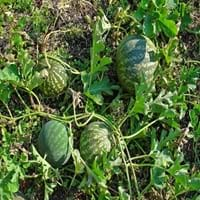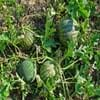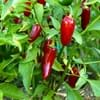Life Span
Annual
Perennial
Origin
Hybrid origin, Africa, Southern Africa
China
Types
Not Available
Actinidia deliciosa chlorocarpa, Actinidia deliciosa deliciosa
Number of Varieties
Not Available
Habitat
along watercourse, Grassland
Mountain forests
USDA Hardiness Zone
10-12
6-9
Sunset Zone
A3, H1, H2, 1a, 1b, 2a, 2b, 3a, 3b, 4, 5, 6, 7, 8, 9, 10, 11, 12, 13, 14, 15, 16, 17, 18, 19, 20, 21, 22, 23, 24
4, 5, 6, 7, 8, 9, 12, 14, 15, 16, 17, 18, 19, 20, 21, 22, 23, 24
Habit
Prostrate/Trailing
Vining/Climbing
Minimum Width
Not Available
Flower Color
Yellow
Light Yellow, Ivory
Flower Color Modifier
Bicolor
Bicolor
Fruit Color
Green, Crimson, Dark Green
Tan, Brown
Leaf Color in Spring
Light Green
Green, Light Green
Leaf Color in Summer
Green, Gray Green
Green
Leaf Color in Fall
Green, Gray Green
Light Green, Yellow green
Leaf Color in Winter
Not Available
Light Green
Leaf Shape
Irregular
Heart-shaped
Plant Season
Summer, Fall
Spring, Summer, Fall
Sunlight
Full Sun
Full Sun, Partial Sun
Growth Rate
Very Fast
Fast
Type of Soil
Loam
Clay, Loam
The pH of Soil
Neutral
Acidic, Neutral
Soil Drainage
Well drained
Average
Bloom Time
Indeterminate
Late Spring, Early Summer
Tolerances
Drought
Drought
Where to Plant?
Container, Ground
Ground
How to Plant?
Seedlings, Transplanting
Layering, Softwood cuttings
Plant Maintenance
High
Medium
Watering Requirements
Requires consistently moist soil, Requires regular watering, Requires watering in the growing season, Water Deeply
Water daily during growing season
In Summer
Lots of watering
Lots of watering
In Spring
Moderate
Moderate
In Winter
Average Water
Average Water
Soil pH
Neutral
Acidic, Neutral
Soil Type
Loam
Clay, Loam
Soil Drainage Capacity
Well drained
Average
Sun Exposure
Full Sun
Full Sun, Partial Sun
Pruning
Remove damaged leaves, Remove dead leaves, Remove dead or diseased plant parts
Prune for shortening long shoots, Prune in early summer, Prune in late winter
Fertilizers
fertilize in growing season, Nitrogen, Potassium
Self-fertile
Pests and Diseases
brown-spot needle blight, Cutworms, Downy mildew, Flea beetle, Flea Beetles, Fungal Diseases, fungus, Fusarium wilt, Powdery mildew, Red blotch
Armillaria root rot, Armored scales, Bleeding canker, Botrytis Blight, Crown gall, Nematodes, Phytophthora Root Rot, Red blotch
Plant Tolerance
Drought, Salt
Drought
Flower Petal Number
Single
Single
Foliage Texture
Coarse
Medium
Foliage Sheen
Matte
Matte
Attracts
Bees, Insects, Squirrels
Not Available
Allergy
Stomach pain, Throat itching
Inflammation, Mouth itching, Throat itching
Aesthetic Uses
Ground Cover
Not Used For Aesthetic Purpose
Beauty Benefits
Not Available
Beautiful Skin, Protects from sun damage
Environmental Uses
Air purification, Food for animals, Food for birds, Food for insects, Versatility
Air purification
Medicinal Uses
High blood pressure, Nutrients
constipation, Heart problems, Low Blood Pressure
Part of Plant Used
Fruits
Fruits
Other Uses
Used As Food, Used for its medicinal properties, Used in making beverages
Used As Food, Used for its medicinal properties
Used As Indoor Plant
No
No
Used As Outdoor Plant
Yes
Yes
Garden Design
Edible, Fruit / Fruit Tree, Herb / Vegetable, Tropical, Vine
Edible, Fruit / Fruit Tree, Rock Garden / Wall, Vine
Botanical Name
CITRULLUS lanatus 'Crimson Sweet'
ACTINIDIA deliciosa
Common Name
Crimson Sweet Watermelon, Watermelon
Chinese Gooseberry, Fuzzy Kiwi, Kiwi
In German
Wassermelone
Kiwi, Chinesischer Strahlengriffel
In French
Citrullus lanatus
Kiwi, Groseille de Chine, Yang Tao, Souris végétale
In Spanish
Citrullus lanatus
kiwi, kivi, actinidia
In Greek
καρπούζι
Ακτινίδια
In Portuguese
Citrullus lanatus
Quiuí
In Polish
Citrullus lanatus
Owoc kiwi
In Latin
Citrullus lanatus
Kiwi fructum
Phylum
Embryophyta
Magnoliophyta
Class
Magnoliopsida
Magnoliopsida
Order
Cucurbitales
Ericales
Family
Cucurbitaceae
Actinidiaceae
Genus
Citrullus
Actinidia
Clade
Angiosperms, Eudicots, Rosids
Angiosperms, Asterids, Eudicots
Tribe
Benincaseae
Not Available
Subfamily
Cucurbitoideae
Not Available
Number of Species
Not Available
Season and Care of Citrullus Lanatus and Kiwifruit
Season and care of Citrullus Lanatus and Kiwifruit is important to know. While considering everything about Citrullus Lanatus and Kiwifruit Care, growing season is an essential factor. Citrullus Lanatus season is Summer and Fall and Kiwifruit season is Summer and Fall. The type of soil for Citrullus Lanatus is Loam and for Kiwifruit is Clay, Loam while the PH of soil for Citrullus Lanatus is Neutral and for Kiwifruit is Acidic, Neutral.
Citrullus Lanatus and Kiwifruit Physical Information
Citrullus Lanatus and Kiwifruit physical information is very important for comparison. Citrullus Lanatus height is 15.20 cm and width 240.00 cm whereas Kiwifruit height is 610.00 cm and width Not Available. The color specification of Citrullus Lanatus and Kiwifruit are as follows:
Citrullus Lanatus flower color: Yellow
Citrullus Lanatus leaf color: Light Green
Kiwifruit flower color: Light Yellow and Ivory
- Kiwifruit leaf color: Green and Light Green
Care of Citrullus Lanatus and Kiwifruit
Care of Citrullus Lanatus and Kiwifruit include pruning, fertilizers, watering etc. Citrullus Lanatus pruning is done Remove damaged leaves, Remove dead leaves and Remove dead or diseased plant parts and Kiwifruit pruning is done Prune for shortening long shoots, Prune in early summer and Prune in late winter. In summer Citrullus Lanatus needs Lots of watering and in winter, it needs Average Water. Whereas, in summer Kiwifruit needs Lots of watering and in winter, it needs Average Water.





